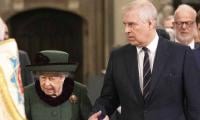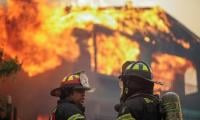Whose revolt is it anyway?
The past two months – starting with discussions about the no-confidence motion, its passage and the PDM government taking over eventually – have been truly unstable times for Pakistan.
This instability is not just restricted to high-power politics; its reverberations can be felt in the economic sphere (the rupee has fallen by about 10 per cent since then , Pakistan’s forex reserves have fallen to an all-time low, oil prices have skyrocketed and now there is talk of raising electricity prices by 25 per cent!). Although Pakistan is no stranger to political or economic instability, one can argue that the current turbulence in the political weather is in many ways unparalleled.
The current revolt centres around three key segments of the population: youth (18-30-year-olds), the internet connected, and those with FA or above education. Numerous surveys by Gallup Pakistan over the past few weeks show that support for the PTI revolt is significantly more pronounced in these three segments. This is not to say that the PTI is not popular in other segments (for example, among the old, those not internet-connected, and the less educated). This is also not to say that other parties are not popular among the FA pass, internet using youth. It is only to suggest that the vanguard of the current revolt are these three segments of the population. Even a cursory look at the protest marches would also confirm that they are overwhelmingly dominated by these groups.
So, how big are these three groups in terms of Pakistani population? FA and above education holders are around 16 per cent of the electorate (according to the PSLM 2021), the internet connected are almost 50 per cent of the adult population and the youth (those in the 18-30 age bracket) are 42 per cent of the 18+ population in Pakistan.
The implication of this finding is clear and simple: the revolt is not just a timely phenomenon, nor is this a group that is small and negligible. Unless we realize, acknowledge and understand the nuances of this revolt we will not be able to get past the current instability.
Why are these three groups so angry that there is talk about nuclear bombs being better than their party not being in government and now closeted and not so closeted threats of revolt and cessation within Pakistan, if their voices are not heard? I think there are two key areas of discontent.
First, as Francis Fukuyama points out in his book ‘Identity: The Demand for Dignity and the Politics of Resentment’, liberal democracy is unable to provide everyone with respect and dignity enough for him or her to feel recognized in terms of what Fukuyama calls ‘thymos’. Fukuyama’s thesis is that there is a ‘part of the soul’ which has been known to philosophers since the dawn of time, called thymos by Plato, which strives for recognition. The trouble with thymos is that it is not rational. People not only sacrifice worldly goods for recognition; they even die for recognition.
We see that at play in Pakistan. The PML-N government was shown the door by people in large numbers despite CPEC providing economic hope, despite single-digit inflation at the time, higher than the average GDP growth rates preceding that era, curbing of electricity shortages in a major way and rapid and quite complete control of terrorism. On the other hand, the Imran Khan government failing on all these counts terribly is still popular – and more so after he was removed. If economic rationality were at play this would be hard to explain but thymos is at play here and it is not always rational. In some ways this is the opposite of ‘It’s the Economy Stupid!’. It appears that the nuts and bolts of Pakistani electoral calculus is not explained by economy but by identity.
The politics of the two dynastic parties is barren for especially these three groups (young, internet-connected and FA or better educated) because it fails to give recognition to its party workers and voters and is increasingly a family affair. The PTI, on the other hand, through its various advisory committees, through the likes of the Tiger Force, through the speeches of its leader directly addressing the youth does give these three segments recognition or a hope for recognition in the future. Whether that is an actual hope or a mirage does not matter.
Second, the three segments (youth, internet connected and FA pass) can also be called the rising middle class of the country. In the 1960s, Samuel Huntington in his book on political development in the third world explained the restless and disturbed third world postcolonial states by explaining how society has become stronger but the state has failed to catch up and this gap between the society’s demands and entitlement to power and resources vs the states inability and incapacity to deliver these very functional needs leads to chasm and conflict between state and society and society with itself.
One can see the same at play in Pakistan, especially within the ‘rising middle class’ which feels entitled to resources and power, but which the state is failing to either provide or control. How Pakistan accommodates or curtails the aspirations of this rising middle class will determine the future history of the country. In other words, my prognosis is that the current political high temperature has its roots in a class struggle emerging between a rising middle class vs the rest of society. If the assertion is true, the political climate may settle down for some time but the weather will remain turbulent till this class struggle settles one way or the other.
It is quite clear that for now the bottom of the pyramid in the country remains politically inactive and therefore the PDM which represents this segment of the population more than the PTI appears anemic. Given a vocal rising middle class and a silent bottom of the pyramid classes, the demands of the middle and upper middle classes must not be accepted at the cost of the poor classes not residing in the power centres of the country. The revolt of this bottom of the pyramid in the 1970s had far-reaching consequences for the country and we wish to avoid these two classes being at odds with each other. The real way forward therefore remains a mediated path where a renewed pledge to work together despite formidable challenges should be forged.
Lastly, Pakistan in 2022 is a strong nation without a strong state. A strong state is not one where power wielders exercise authoritarian and arbitrary control. A strong state is one where rule of law is applied fairly and justly but with unanimous certainty of being applied without fear of reprisal. The current limbo is therefore not just a social phenomenon but also a legal political and constitutional dilemma.
No state can survive or attain stability if all organs of the state fight for the executive crown and get away with exercising it every now and then. The latest judgments from the Supreme Court is not the first instance of failure on following the law vs being pragmatic in solving the problem and not caring for the process. Similarly, the role of the establishment in bringing a government in and then showing it the door is also not the first one in Pakistan’s chequered history. Unless we can fix this power-sharing structure between the executive, legislature and the judiciary, history will keep repeating itself with or without the social calculus supporting the expansionist designs of one pillar of the state against the other.
As we get ready to celebrate the 75th Anniversary of Pakistan this August 14, let’s hope we can answer these pivotal questions in a sober and reflective manner. Unfortunately, the current political weather shows little signs of such a possibility.
The writer is a political science student with a degree from SOAS, London.
-
 Prince Harry’s Relationship With King Charles 'changes' With Archie, Lilibet’s UK Doors Opening
Prince Harry’s Relationship With King Charles 'changes' With Archie, Lilibet’s UK Doors Opening -
 Sara Waisglass Addresses Fans Concerns About Recasting In 'Ginny & Georgia'
Sara Waisglass Addresses Fans Concerns About Recasting In 'Ginny & Georgia' -
 Tim Allen Reflects On Stepping Into Mentorship During 'Home Improvement' Gig
Tim Allen Reflects On Stepping Into Mentorship During 'Home Improvement' Gig -
 Royal Tensions Rise As King Charles Navigates Prince Harry, William Feud
Royal Tensions Rise As King Charles Navigates Prince Harry, William Feud -
 Katie Bates Husband Travis Clark Confesses He Cheated On Her
Katie Bates Husband Travis Clark Confesses He Cheated On Her -
 Andrew Makes Life As Newly Stripped Commoner Offensive To The People
Andrew Makes Life As Newly Stripped Commoner Offensive To The People -
 Kansas Woman Loses $255,000 In Gold In FBI Impersonation Scam
Kansas Woman Loses $255,000 In Gold In FBI Impersonation Scam -
 Prince Harry Arrives In UK To Fight His Phone Hacking Case
Prince Harry Arrives In UK To Fight His Phone Hacking Case -
 Nick Jonas Attempts To Take Break From Jonas Brothers With Upcoming Solo Album?
Nick Jonas Attempts To Take Break From Jonas Brothers With Upcoming Solo Album? -
 Hayden Panettiere Gets Candid About Putting Life Story On Paper
Hayden Panettiere Gets Candid About Putting Life Story On Paper -
 'Ted Lasso' Star Reveals Real Wish For Season Four Story
'Ted Lasso' Star Reveals Real Wish For Season Four Story -
 Peter Claffey 'just Hoping' For THIS Ahead Of 'Game Of Thrones' Spinoffa
Peter Claffey 'just Hoping' For THIS Ahead Of 'Game Of Thrones' Spinoffa -
 Sophie Turner Reflects On Life After Motherhood: 'Really Nice'
Sophie Turner Reflects On Life After Motherhood: 'Really Nice' -
 Royal Expert Makes Bombshell Claim On How Late Queen Tried To Protect Andrew
Royal Expert Makes Bombshell Claim On How Late Queen Tried To Protect Andrew -
 81-year-old Florida Woman Arrested After Chilling Murder Plot
81-year-old Florida Woman Arrested After Chilling Murder Plot -
 Cardi B Scores Major Earn Against Offset In Legal Battle
Cardi B Scores Major Earn Against Offset In Legal Battle



